#puzzle video game
Text


By Sarah Kuta
September 20, 2023
Tetris is one of the world’s best-selling video games and even the subject of a recent film — but the beloved 1980s digital puzzle may also help improve your mental health.
More specifically, psychologists are studying whether playing Tetris can help reduce the number of flashbacks or intrusive memories people have after a traumatic experience, such as sexual assault, a car accident, combat, a natural disaster, or a difficult childbirth.
Most people — roughly 70 percent — have had some traumatic experience in their lives.
But only a small fraction of the population, around 4 percent, will develop post-traumatic stress disorder (PTSD), a diagnosable psychological issue with symptoms ranging from sleep disturbances to self-destructive behaviors.
But whether trauma leads to full-blown PTSD or not, painful memories can spring to mind without warning.
Flashbacks are not only emotionally distressing, but they can also make it difficult to concentrate, which can lead to problems at work or school.
These intrusive memories often pop up as a picture or a short movie in our mind’s eye.
Against this backdrop, British psychologist Emily Holmes wondered if she could reduce the number of flashbacks people had by giving their brains a competing image to focus on shortly after they experienced trauma, while their memories were still forming.
The painful recollection would still exist, it just wouldn’t intrude as often.
“The human mind isn’t like a video camera — it doesn’t just immediately record everything we’ve experienced,” says Emily Holmes, a psychology professor at Karolinska Institutet and Uppsala University in Sweden.
“It actually takes some time, possibly hours, before a memory gets solidified into mind. What we were interested in was: Is there something we can do as the memory is still consolidating that would help it not become a flashback?”
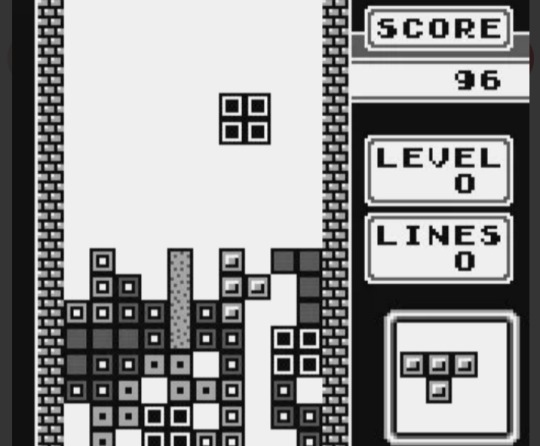
A ‘cognitive vaccine’
Her team began testing an array of visuospatial tasks that involve generating or manipulating images in the mind’s eye, such as imagining a constellation or tapping out a complex pattern.
One day, a student suggested they try a video game — and Tetris became the obvious answer.
“It involves colors, it involves space because you’re having to move blocks around to complete lines and, critically, it requires you to rotate the shapes in your mind’s eye,” Holmes says.
“You really have to use your mental imagery skills because you’re trying to fit the blocks into the right place.”
They started to experiment with Tetris — first, in the lab, by showing participants a traumatic film and, later, in the real world, by meeting with people in hospital emergency departments who’d just been in car accidents.
In both settings, people who played Tetris within hours of the trauma experienced significantly fewer flashbacks over the course of the next week compared to those who didn’t.
(58 percent fewer in the film study, and 62 percent fewer in the car accident study)
Based on the promising results of this proactive, preventative approach — which Holmes describes as being like a “cognitive vaccine” — they next turned their attention to established memories.
“The reality is, we’re not going to be able to get to most people within a few hours of a traumatic event occurring,” she says.
“People can have intrusive memories for years or decades, so clearly we need to do something for those older memories.”
In one study, Holmes’ team asked people receiving treatment for PTSD to focus on a specific flashback while playing Tetris for 25 minutes once a week for several weeks.
By the end of the experiment, participants saw a 64 percent reduction in the number of times that specific memory popped up, as well as an 11 percent reduction in memories they hadn’t targeted.
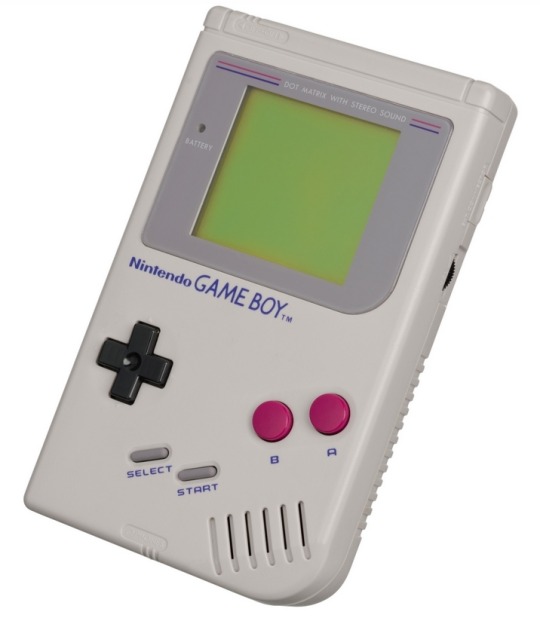
In another study, they worked with intensive care unit nurses who had established intrusive memories — including many that were more than three months old — of traumatic events from the COVID-19 pandemic.
After four weeks, nurses who played Tetris experienced one-tenth the number of intrusive memories compared to those who did not play.
They also reported improvements in other symptoms, such as insomnia, anxiety, and depression.
Overall, nurses who played Tetris saw a 73 to 78 percent reduction in flashbacks.
As Holmes points out, there’s probably nothing special about Tetris specifically.
She suspects any task with high visuospatial demands — like drawing, doing a jigsaw puzzle, or making mosaics — might achieve similar results.
However, tasks that are verbally distracting, like doing a crossword or reading, probably wouldn’t work as well.
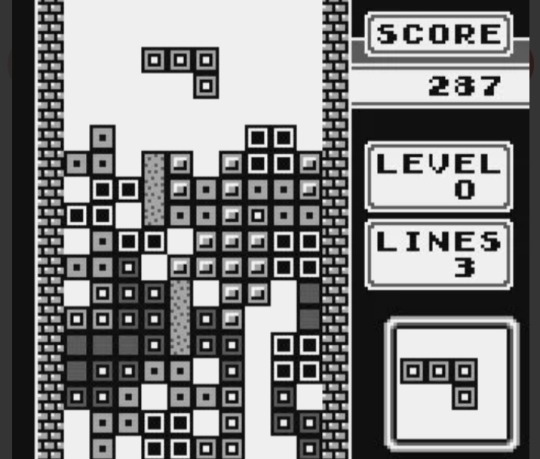
Tetris as a coping tool
Importantly, in their experiments, researchers aren’t just handing over a Game Boy and telling people to start playing Tetris.
Rather, they first ask participants to call to mind a particularly bad piece of a memory, called a hotspot.
Then, during gameplay, they instruct patients to mentally rotate the shapes, called tetrominoes, in their mind’s eye before they fall into the field of play.
They also ensure participants play Tetris for a sufficient length of time, usually between 10 and 20 minutes.
So far, all of their work has involved this procedure, which the researchers suspect is important to achieving results.
“Historically, intrusive memories of trauma are quite difficult to treat because they’re stuck in your mind for a reason — your brain’s gone into red alert and is trying to keep you safe,” says Holmes.
“They’re just really tricky things to alter. So if you’re just playing a game, it may help take your mind off things or reduce distress, but it might not help stop the flashbacks from intruding in the future.”
Still, playing Tetris on your own, without following the research procedure, likely won’t hurt you — and it may even help you feel better.
Canadian therapist Morgan Pomells recommends it to her clients as a coping tool for soothing feelings of anxiety or hyperarousal.
She doesn’t use Tetris during therapy sessions but, rather, suggests it as a potential option for moments when distressing memories or mental images arise during daily life.
“It’s one of the tools in the toolbox,” she says.
“A lot of people find it to be really helpful, especially people who have a really visual element to some of the symptoms they experience.
Turning to Tetris and being able to really sink into that game, even just for a couple minutes, allows them to feel a little safer and it really quiets their minds.
And when they resurface, they’re in a calmer state and actually able to take stock of their surroundings.”
However, Pomells cautions, Tetris or any other type of coping tool is not a substitute for seeing a therapist.
Holmes echoes that sentiment, adding that people who are suffering from flashbacks should first seek evidence-based treatment from a healthcare provider.
While Tetris may eventually become an evidence-based treatment itself, right now, researchers are still in the early stages of gathering clinical evidence.
“This is more of a journey of curiosity,” says Holmes.
Additional clinical studies are underway now. In the future, researchers also hope to test the long-term effects of Tetris on flashbacks, as well as understand what’s actually happening in the brain.
More broadly, they want to see if Tetris is effective at reducing intrusive memories related to other conditions beyond trauma, such as substance abuse disorders and depression.
“Mental images can haunt people in a variety of forms and I think it’s a real scientific challenge of the future,” says Holmes.
“It’s like being a physicist some centuries ago. We’ve just started to see the stars and planets, now we’ve got to go explore them.”

Tetris is a puzzle video game created in 1985 by Alexey Pajitnov, a Soviet software engineer.
It has been published by several companies for multiple platforms, most prominently during a dispute over the appropriation of the rights in the late 1980s.
After a significant period of publication by Nintendo, the rights reverted to Pajitnov in 1996, who co-founded the Tetris Company with Henk Rogers to manage licensing.
—
Alexey Leonidovich Pajitnov (born April 16, 1955) is a Russian computer engineer and video game designer who is best known for creating, designing, and developing Tetris in 1985 while working at the Dorodnitsyn Computing Centre under the Academy of Sciences of the Soviet Union (now the Russian Academy of Sciences).
#Tetris#video games#mental health#mental heath awareness#mental heath support#1980s#80s#20th century#digital puzzle#traumatic experience#trauma#post-traumatic stress disorder (PTSD)#PTSD#flashbacks#memories#psychology#cognitive vaccine#Game Boy#Alexey Pajitnov#puzzle video game#Nintendo#Tetris Company#Alexey Leonidovich Pajitnov
13 notes
·
View notes
Text
I am a solo indie dev trying to overcome my anxiety and actually let people know my game exists. It is a cute physics based game where you are the level.
I love making this game with passion and I am so excited to share it with the world, but somehow I need to let the world know. Unfortunately the way steam works is the more wishlists the more visibility, so if you are interested it is super appreciated :)
Wishlist on steam or visit the website to find out more mightymarbles.com
#video games#gamedev#indie games#indiedev#unity3d#game development#indiegamedev#puzzle#puzzle games#rube goldberg#mini golf#marble run#marbles
24K notes
·
View notes
Video
Viewfinder is a mind-blowing perspective-based puzzle adventure that does things you won't believe are possible!
Read More & Play the Beta Demo, Free (Steam)
#Gaming#indie games#pc games#pc gaming#indie game#pc game#video games#puzzles#puzzle games#indie gaming
29K notes
·
View notes
Text
Limbo style atmospheric puzzle-platformer about a little red-haired girl where the obligatory surreal brainfuck powerup sequence that changes up the puzzle formula in the final act gives you an air dash.
#concepts#gaming#video games#tropes#swearing#pixel-art precision puzzle platformers starring red-haired women who can air dash
1K notes
·
View notes
Photo

Pokémon Puzzle Challenge GBC Cartridge (2000) [✩]
#pokemon#pkmn#pokemon puzzle challenge#pokemon puzzle#puzzle#challenge#gameboy color#gbc#gameboy cartridge#cartridge#nintendo#game freak#video game#video games#vg#pikachu#pichu#japan#japanese#nostalgia#2000#2000s#2000s nostalgia#2000s tech#2000s technology#tech#technology#mp
2K notes
·
View notes
Text

I love puzzle games
1K notes
·
View notes
Text
As much as I love the thought of Levi having to do the older sibling "Just hand me the controller!" move to Satan and co. when they get stuck in a game, I find the idea of Mammon doing it to him even more hilarious. Especially if Mammon actually figures it all out and does it flawlessly while Levi's gnawing his tail in fury.
Bonus points if Lucifer does that Dad thing to Levi too where he's been stuck on a level for hours, Lucifer watches him play for like .5 seconds, then figures out the puzzle immediately without even understanding the "intimate details" of the game mechanics like any good otaku should.
#mammon makes him pay get the controller back#or he exits the game without saving after he fixed it#lucifer doesnt get video games#but he does get logic puzzles#chastizes levi for bad common sense#obey me#obey me shall we date#shall-we-date-obey-me#obey me leviathan#obey me lucifer#obey me mammon#obey me headcanons
1K notes
·
View notes
Text
I was on a boss level of a video game where the boss was a computer and various other electronics were moving around on a sort of trolley that was of human height. It wasn’t clear if the boss was inside the robot trolley or if it was being controlled remotely. The arena was a fairly small white room with a column of computer stuff in the middle.
When it became clear that the boss could not be defeated I realised that it was necessary to first complete an IRL puzzle that was kinda like a padlock but had loads of vertical and horizontal metal cylinders in it. You could only complete the padlock puzzle if you took a coin out of it and put the coin into various slots around this river in the middle of a town I’ve never been to.
Me and a few friends had to climb over walls and try not to fall into the river whilst putting the coin into the slots in the walls. The coin would always come back out because it somehow saved where it had been and could update the padlock puzzle.
Even when the coin had been everywhere it needed to go the puzzle still wasn’t unlocked, but one of my friends figured out how to open the back which gave you access to the cylinders and the ability to move them at will.
Although we cheated to open the padlock puzzle, I assumed that I could now defeat the computer trolley boss, but I never found out if I was right.
347 notes
·
View notes
Text

Requested by anon
#ghost trick#ghost trick phantom detective#video games#gaming#video game polls#polls#tumblr polls#adventure#puzzle
148 notes
·
View notes
Text
i really like the lock picking in Skyrim because it's an actual skill that i, the player, have gotten good at.
like, i have never put a single perk point into the lockpicking tree, but i can pick any lock in the game in ten picks or less because i have a system that i developed into a practiced skill i use on all the locks.
That may sound like a useless or broken game dynamic, but it's one of my favorite things in the game actually -- the locks in Skyrim are built a certain way, and i, as a player, have developed the skill to pick them based on experience, practice, and the development of a process.
i actually wish more things in more RPGs were like that.
#video games#i'd love to use little skill tests and stuff for table top games too#the little ball on a rope into the cup game or a rubix cube or one of those four move chess puzzles#even that game memory#you could use those kinds of skill attainable mini games in a ttrpg for things like lock picking / pick pocketing ...#even a dart board for arrows would be cool with difficulty ranging from just hit the board to center bullseye only#idk i think that could be cool
154 notes
·
View notes
Text
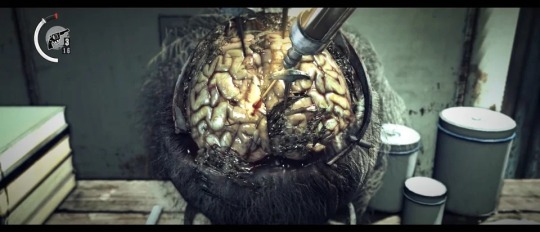
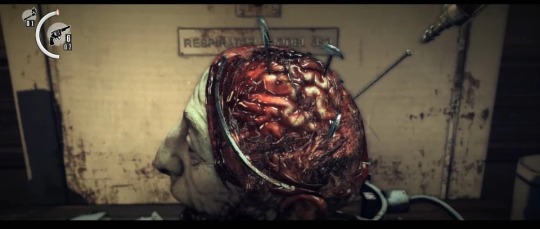
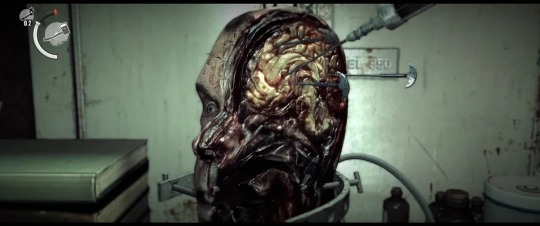
CHAPTER 9 - THE EVIL WITHIN (2014)
102 notes
·
View notes
Text
Something that occurred to me when watching OSP's Dracula video is when Red says that Dracula can't work as anything but a novel, I realized that hey, maybe adaptations to film or television or theater can't capture what makes Dracula Dracula, but a video game could. There have been plenty of Draculas in plenty of games, but I think a near-identical translation of Dracula into the video game medium could be the closest we get to an actual adaptation. And specifically, one that changes styles multiple times throughout the game.
Think, we start with Jonathan Harker on his way to Castle Dracula. It's a fairly normal 3rd-person RPG that morphs into survival horror as the secrets of Castle Dracula and the Count are unearthed. Then it abruptly turns into a visual novel of Lucy and Mina exchanging letters, complete with a romance subgame with Lucy and her suitors. Interspersed throughout the game are Seward's interactions with Renfield through the lens of a puzzle game. Then we're on the deck of the Demeter in a full-on horror game as Dracula feeds on the crew.
We're back to the visual novel style as Lucy and Mina go on holiday to Whitby, which ends when Mina receives a letter about Jonathan being in Budapest. Then once again we're in a 3rd-person RPG, this time as Seward, and we are finally introduced to Abraham Van Helsing. This part of the game would incorporate the puzzle elements of the Renfield sections as we attempt to diagnose Lucy's illness.
After Lucy dies, the game shifts into a more action-focused tone for a time as we hunt down the Bloofer Lady and finally stake Lucy. After this, Jonathan and Mina return to the story and it becomes a mystery game as we track down where Dracula's coffins of earth are. Mina begins to show the same symptoms Lucy did and we get a rhythm game from Van Helsing's POV as he hypnotizes her to aid in tracking Dracula.
In the final section of the game, we follow the three groups in sequence. First, Mina and Van Helsing in a dungeon-crawl game as they reach Dracula's castle, ending in Van Helsing destroying the brides of Dracula. Second, Quincey and Seward's travel as the pair follow Dracula on land, ending with the sight of Dracula's coffin being loaded into a wagon. Third and finally, Jonathan's POV as he, Holmwood, Quincey, and Seward converge on Dracula, and the final fight of the game begins. Afterward, we see the epilogue play out and thus ends the Dracula video game adaptation.
It would probably be insane to pull off but if it were, it would be glorious.
#dracula#count dracula#dracula daily#dracula spoilers#video games#survival horror#visual novel#puzzle games#horror#jonathan harker#mina murray#lucy westenra#jack seward#arthur holmwood#quincey morris#abraham van helsing#renfield#count tagula#vulture chatter#is this a stupid idea? i don't think so#but if anyone with actual video game-making experience wants to weigh in i would gladly hear what you have to say
657 notes
·
View notes
Text
Sound on! Yesterday I posted this and you gave me feedback to improve it. So here is the new improved version!
I am a solo hobby dev from Australia making Mighty Marbles - a physics based marble game where you are the level. There is music in the game too but I turned it off so the SFX was clear!
Yesterday I posed this and got feedback the marble on plastic sounded a bit too much of a thud and the siren for the copter was a bit much so I tried to fix. Did I make it better?
If you want to find out more visit the steam page or web site. As a small indie every wishlist helps me get some visibility on steam!
#video games#gamedev#indie games#indiedev#unity3d#game development#indiegamedev#puzzle#puzzle games#rube goldberg#nintendo switch#steam games#physics#casual gameplay
1K notes
·
View notes
Text
Today's aesthetic: video games with innovative puzzle-solving mechanics where the developers ran out of ideas for what to do with those mechanics about two-thirds of the way through, so the final challenge is, like, a stealth section or something.
1K notes
·
View notes
Text




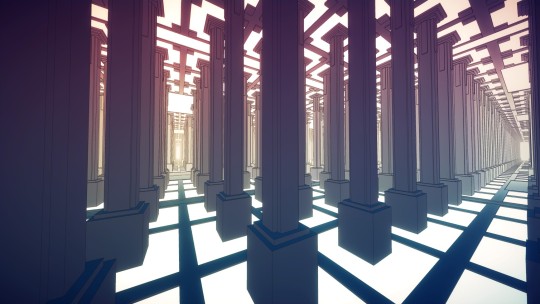
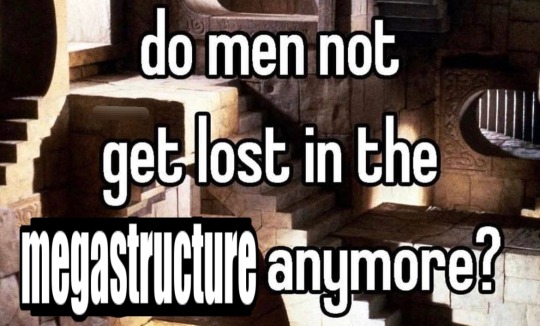
#finished manifold garden tonight ouuuuugghghgghh it was so Very good. yes👍YES👍yeahyeahyeahyeah#i luv u exploring endlessly stretching impossible spaces. i luv u mandelbulbs and twisty fractals. i luv u thrumming synthy music#man it was so tasty. end of the game was giving me fearful..cosmic dread? i havent felt since outer wilds. just THROWIN urself off#like. these are colours these are twisting colours. why are u slumping down the couch ever so slightly with a chill down ur arms#fucking wonka boat tunnel dmt trip nightmare of a colour sure. sure yeah. and it was AWESOME awesome ending. TOTAL collapse#fun puzzles. throwin urself and free falling through a level never got old. loved snappin the gravity round. nada motion sickness✅️Score✅️#playing manifold garden: this is just like jacob gellers shape of infinity video.......#couldnt stop thinkin abt him describing the airborne funerals given in the library of babel#the body falling eternally never hitting the ground thats CRAZY THAAAAAAAAAAAAATS. i would like to read it. im gonna read it#jacob geller u have not led me astray yet on video game recs. manifold garden! MANIFOLD GARDEN!!!!!!!!!!#great ost yeaaaassirr. just really liked it so i did oohheeeeooo :] :D yeahboshdone#manifold garden#structure tag#chewtoy
337 notes
·
View notes
Text

Emily the Strange: Strangerous
#emily the strange#nintendo ds#video game#puzzle adventure#gif#my gif#do not repost#I used ezgif to make this btw
132 notes
·
View notes